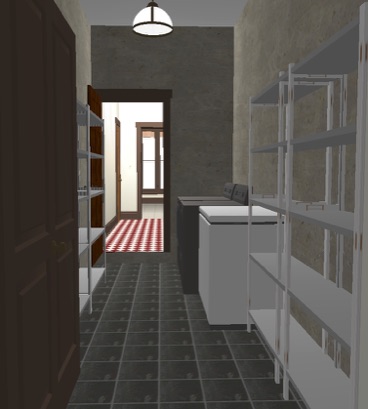Renovation Plans
It was the intention to keep the Ground Floor as close to the original style as possible, by retaining many of the features that contribute to the old-world feeling of this part of the house. Some changes will be required to overcome some existing problems, and the kitchen will require extensive modernisation. The proposed layout of the renovated Ground Floor is as follows.
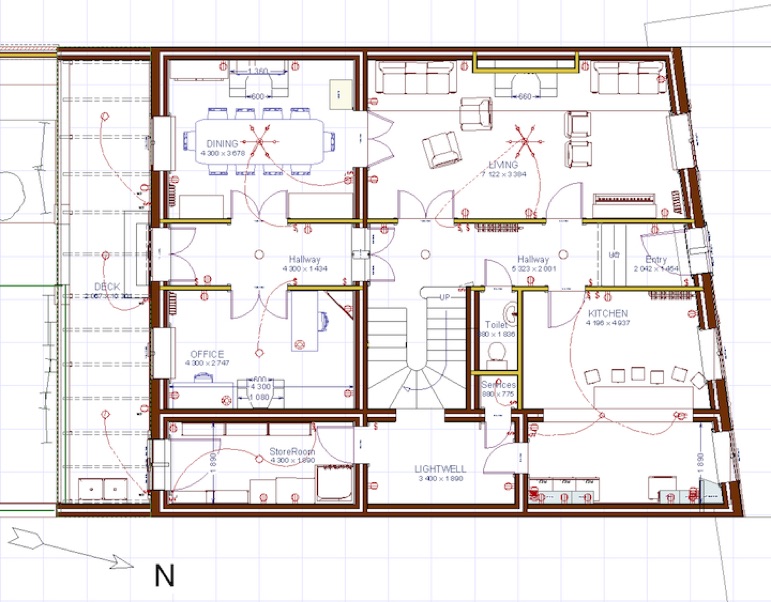
The front and rear hallways will be retained in essentially the same styles. However, the dark "painted wood" walls will be repainted in a lighter style with contrasting trim (since it would be very difficult to restore the "painted wood" style where it has suffered extensive peeling and moisture damage). The ceiling will be lowered to give a ceiling height of 2.8m (as it will be in nearly every room) to enable cabling to be laid above the new ceiling, thus removing the need for exposed cable conduits. The ceiling lights in the front, rear and central hallways (and on each floor of the stairwell) will be automatically controlled by a "domotique" (home automation) system that will sense the presence of someone in these zones and automatically switch lights on and off as they enter the front or back doors, walk along the hallway or up and down the stairs. This will save energy and also increase safety by having an adequate level of lighting in zones when required. Note: all the “pictures” below of the planned renovations were made using 3D views from Home Designer.
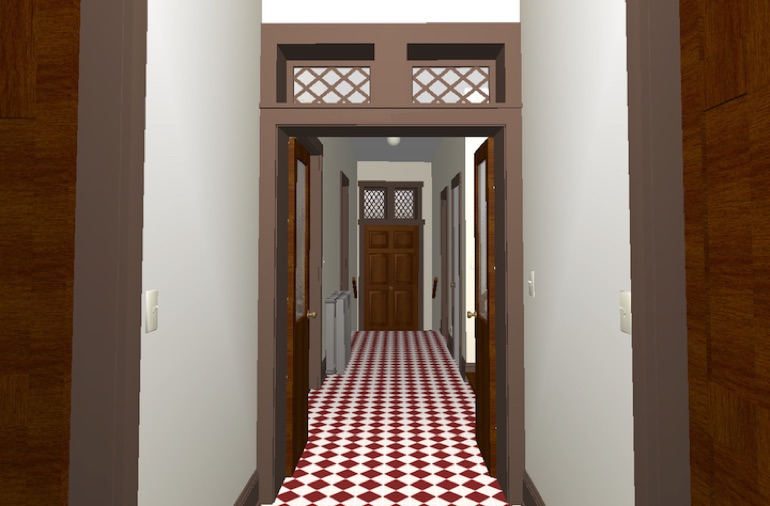
The ductwork for the heat-exchange VMC ventilation system will also be laid in the space between the new and the old ceiling. VMC ventilation is a fan-forced system which extracts air from the wet rooms in the house (e.g. bathrooms, toilets, kitchen) and expels it through a roof vent after (in winter) removing heat from the expelled air. Fresh air is then captured from outside, filtered and heated with the heat-exchanger that extracted the heat from the expelled air. The heated, dehumidified, filtered air is then fed back into the dry rooms in the house (e.g. bedrooms, living areas). In summer, the system is reversed, such that cooler air is expelled, and the heat exchanger then cools the incoming warmer air using the energy captured from the outgoing air. Such a system ensures adequate ventilation of the house, with minimal energy loss, and without the need for open ventilation grids in the walls or windows. All the windows will be replaced by double-glazed windows, which will retain the same external appearance as the existing house to be compliant with the heritage requirements of the OPAH program.
The space between the new and old ceilings will be filled with insulation material to thermally isolate the Ground Floor from the 1st Floor above (the same will apply between the 1st and 2nd Floors). This will create thermally-isolated zones on each of the three floors, which will then be controlled by a "domotique" system that will automatically control temperatures and heating systems on each of the floors.
The Living Room will continue to function as a Living Room, with music and entertainment systems installed. The piano will be moved from the previous Sitting Room. All external walls in the Living Room (and other rooms) will be "doubled" with the installation of another insulated wall frame and plaster wall inside the existing external brick wall. This will assist with moisture control from the external walls, with thermal insulation and also enabling wiring and plumbing to be placed between the new and the old walls (the appearance below is not exactly as it will be when constructed - there is only so much realism you can get from a 3D software program!). Much of the old furniture and mirrors will be retained in the ground floor rooms to preserve the old-world charm of the existing house.
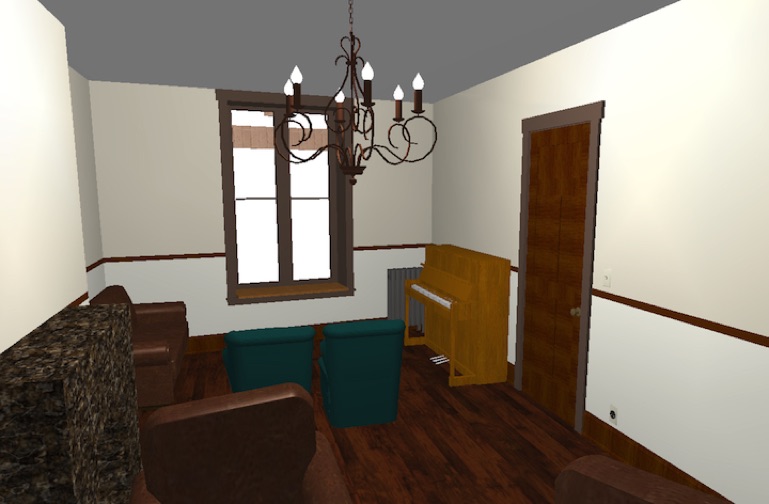
The existing Sitting Room will be converted into a Dining Room, mainly for the use of the B&B guests. A large table seating ten will be the central feature of this room. Once again the ceiling will be lowered, and external walls will be doubled.
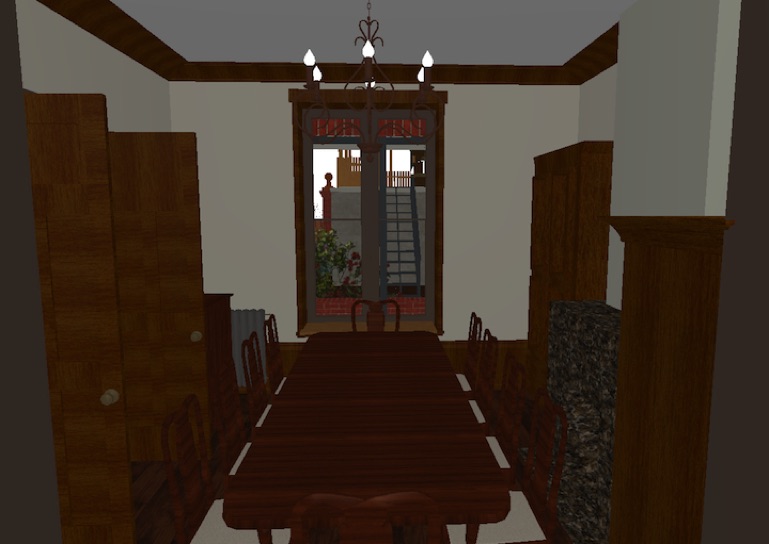
The existing bedroom on the Ground Floor will be converted to an Office, mainly for administration purposes for the B&B. The paint scheme and furnishings will attempt to bring it closer to the style of the new Living and Dining rooms.
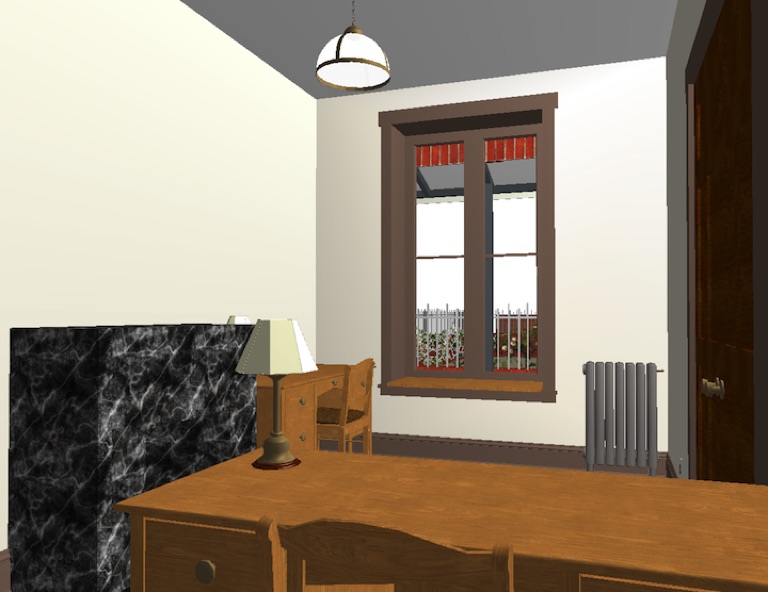
The room which will likely see most change on the Ground Floor will be the Kitchen. Given the outmoded style and equipment currently in the Kitchen, it will be totally stripped and reconstructed. New electrical, water and gas connections will be required. An island bench will be installed, with sufficient seating for cooking school students to obtain a good view of proceedings. New appliances will be installed, including three under-counter fridge units. An extractor fan will be installed over the cooker, and tiles to match those in the hallway will be installed as a splash-back to integrate this new room with the older hallway. The sink will be moved from the eastern wall on the far side of the kitchen to the wall on the right of the door to the hallway.
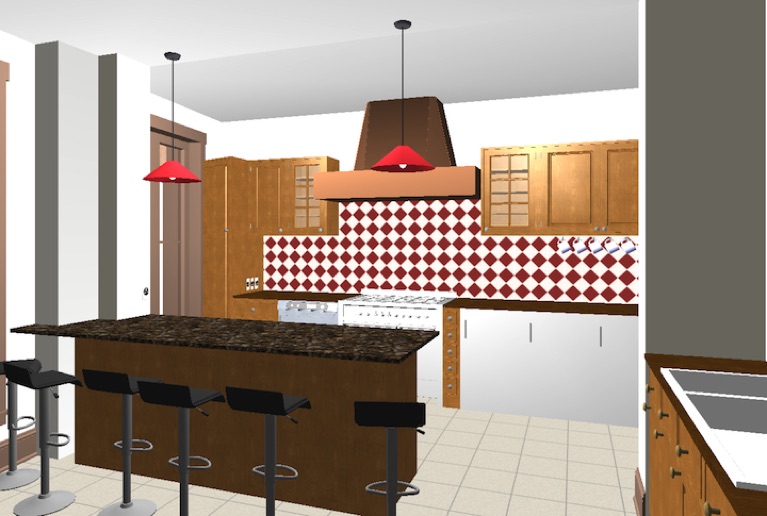
Through a door at the side of the kitchen you will enter what was the old laundry, but will now be a dramatic lightwell room. The temporary roof of perspex and asbestos sheets over the old laundry will be removed, and the flooring will use the diamond-shaped tiles to continue the visual links with the kitchen and the hallway. The old toilet room off the lightwell will be converted into a services cupboard, with the main toilet off the hallway being enlarged by moving the back wall. The ultimate use to which this lightwell room will be put is still uncertain; at the moment it is a dramatic architectural space, as can be seen by looking up towards the new glass roof above (more on that later when the 2nd Floor is described). Its use will develop over time, but hanging plants are currently featuring in its imagined future.
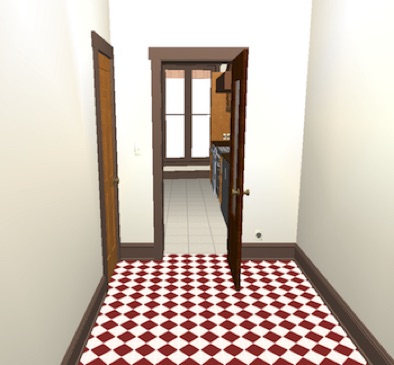
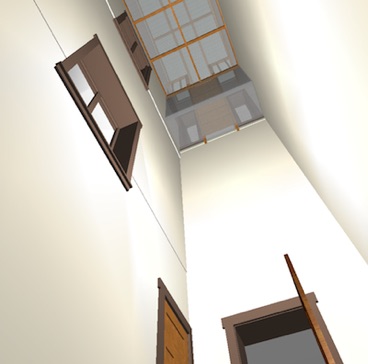
The Storeroom out the back of the Lightwell will remain as a storeroom, but will also house the laundry appliances (washer and dryer) plus a large deep freezer.
